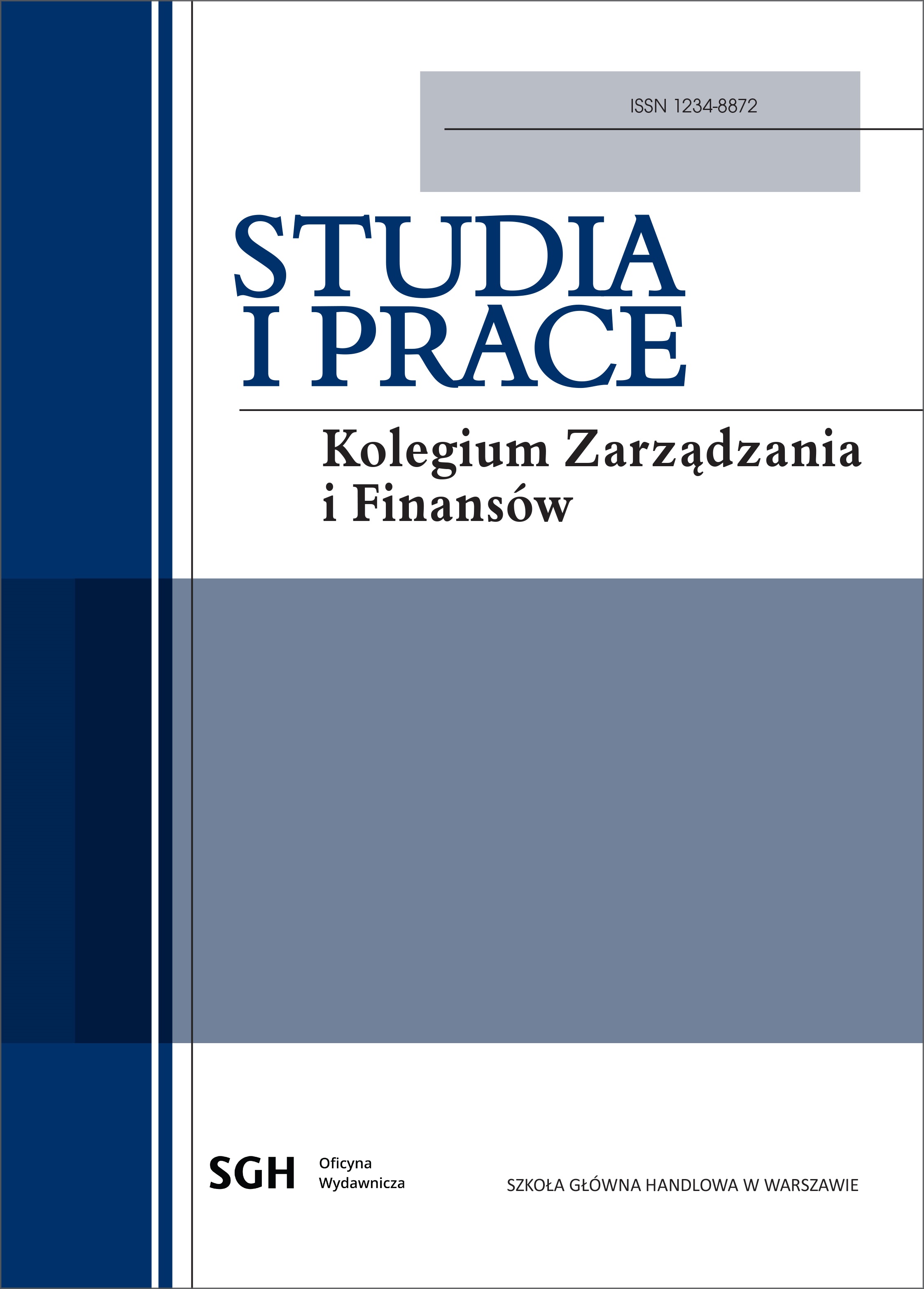Struktura portfela innowacji dużych przedsiębiorstw w Polsce przed globalną pandemią i w czasie jej trwania
DOI:
https://doi.org/10.33119/SIP.2022.184.7Słowa kluczowe:
innowacje, innowacyjność, portfel innowacji, pandemiaAbstrakt
Innowacyjne przedsiębiorstwa aktywnie kształtują swój portfel innowacji, czyli podejmują decyzje dotyczące alokacji zasobów między różne rodzaje innowacji. Warto jednak zaznaczyć, że znaczący wpływ na owe decyzje mają zmiany w otoczeniu przedsiębiorstw, m.in. takie jak trwająca pandemia wywołana rozprzestrzenianiem się wirusa SARS-CoV-2. Celem artykułu jest identyfikacja zmian w strukturze portfela innowacji dużych przedsiębiorstw w Polsce w wyniku pandemii. Cel ten został zrealizowany poprzez badania empiryczne wśród przedsiębiorstw w Polsce zatrudniających powyżej 250 osób, które w latach 2016–2019 wprowadziły co najmniej jedną innowację. W artykule przeanalizowano innowacje w podziale na innowacje podstawowe, z pogranicza i transformacyjne, a wyniki wskazują, że w strukturze portfela innowacji zbadanych przedsiębiorstw dominuje alokacja zasobów na innowacje z pogranicza; alokacja zasobów w innowacje podstawowe i transformacyjne jest natomiast mniejsza. W wyniku trwającej pandemii nastąpiła zmiana w strukturze portfela zbadanych przedsiębiorstw polegająca na przestawieniu się z innowacji z pogranicza i transformacyjnych na innowacje podstawowe.
Downloads
Bibliografia
2. Archibugi D., Filippetti A., Frenz M. [2013], Economic Crisis and Innovation: Is Destruction Prevailing Over Accumulation?, „Research Policy”, vol. 42 (2), s. 303–314.
3. Cooper R. G., Edgett S. J. [2010], Developing a Product Innovation and Technology Strategy for Your Business, „Research-Technology Management”, vol. 53, no. 3, s. 33–40.
4. Damanpour F., Aravind D. [2012], A Review of Research on Organizational Structure and Innovation: From Organic to Ambidextrous Structure, w: Handbook of Organizational Creativity, red. M. D. Mumford, Academic Press, Boston.
5. Davila T., Epstein M. J., Shelton R. [2006], Making Innovation Work How to Manage It, Measure It, and Profit from It, Prentice Hall, New Jersey.
6. Deschamps J-P. [2014], Liderzy innowacyjności. Jak rozwijać i utrzymywać innowacyjność w firmie, Oficyna a Wolters Kluwer business, Warszawa.
7. Hojnik J., Ruzzier M. [2016 [, What Drives Eco-innovation? A Review of an Emerging Literature, „Environmental Innovation and Societal Transitions”, vol. 19, s. 31–41.
8. Kahn K. B. [2018], Understanding Innovation, „Business Horizons”, vol. 61, no. 3, s. 453–460.
9. Markham S. K., Lee H. [2013], Product Development and Management Association’s 2012 Comparative Performance Assessment Study, „Journal of Product Innovation Management”, vol. 30, no. 3, s. 408–429.
10. Nagji B., Tuff G. [2012], Jak zarządzać portfelem innowacji? „Harvard Business Review”, nr 115, s. 45–55.
11. OECD/Eurostat [2018], Oslo Manual 2018: Guidelines for Collecting, Reporting and Using Data on Innovation, 4th edition, The Measurement of Scientific, Technological and Innovation Activities, OECD Publishing, Paris/Eurostat, Luxembourg.
12. Paunov C. [2012], The Global Crisis and Firms’ Investments in Innovation, „Research Policy”, vol. 41 (1), s. 24–35.
13. Pisano G. P. [2015], You Need an Innovation Strategy, „Harvard Business Review”, no. 93 (6), s. 44–54.
14. Rudolf T., Fuchs K., Kossut N., Workiewicz M., Wróblewski J. [2006], Strategie innowacji. Jak planować rozwój przedsiębiorstwa w warunkach niepewności? „e-mentor”, nr 5 (17).
15. Sopińska A., Mierzejewska W. [2017], Otwarte innowacje produktowe realizowane przez przedsiębiorstwa działające w Polsce. Podejście zasobowe, Oficyna Wydawnicza SGH, Warszawa.
16. Wziątek-Kubiak A., Pęczkowski M. [2019], Czynniki ciągłości komercjalizacji innowacji w okresie negatywnego szoku zewnętrznego. Przykład Polski, „Bank i Kredyt”, vol. 50 (1), s. 21–44.









